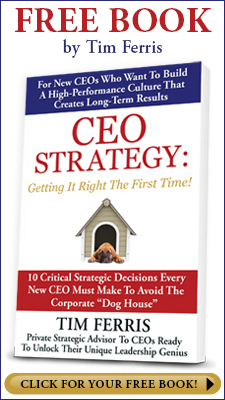“Tim gives Amber some examples of success stories, and the criteria he uses to select the clients he will work with.”
Transcription
Amber Sherlock: So, can you give us an example of one or two success stories where clients have followed your approach?
Tim Ferris: There is a client I’ve been working with for probably three years now. When I first came to them, they were in a real mess. This is a utility organisation and they were spending more time fighting each other than getting the job done, in reality. The leader was absolutely frustrated with everyone. Everyone was absolutely frustrated with the leader. And we took some measures of their culture and the engagement of the people, and it was a bit of a train-wreck. And, everything in my experience as I engaged with that organisation told me that those results are absolutely spot on. It was really tough. Nobody was happy there, despite the fact that conditions were good. The location they were at was great. Nobody was happy. So we started work with the most senior leadership, with the CEO and with the senior leadership team, and we did some really intensive work around diagnosing where their behaviour was causing the impacts that they were having – that were being had in the organisation. So we worked really solidly with them for at least two years. Then we did a whole lot of work around team development and work with individuals right across the organisation to give them a great awareness of how their behaviour was impacting their ability to get the job done… How a lot of the time the things that all of them, on every side of the equation, were complaining about, were actually pretty much their own fault. We remeasured again after two years, and across every measure of culture, they’d improved between 10% and 40% across every measure. Their staff satisfaction improved by 10%, and their quality of output improved by 35%. And, when I went in and engaged the whole organisation two years later, the stories that people were telling me where very different – the emotions that people were expressing were very different. It was anger and frustration and quite, at times, an outright hostility – a whole lot of that had settled down. The place was not perfect. It’s still got a way to go. In a sense, they’ve now arrived at where I start with most organisations, but where they have come in two years… I sat with the CEO and said, “Hey, have a look at this!” And he in particular had worked really hard on himself and his style, because he was having some impacts that weren’t helping him that he wasn’t particularly aware of. And, I had sat with him many times as he agonised over this, he would say, “I just don’t know what to do. I don’t know how to do this differently.” We would work through it, and I was able to sit with him with the results after two years and go, “Have a look. We’re actually making some gains here. It’s actually been worth.” To that leader’s credit, he had done a fantastic job working on himself and everything underneath was shifting as a result.
Amber Sherlock: When you’re selecting the clients you want to work with, what sort of criteria are you looking for?
Tim Ferris: I’m looking for leaders that are least willing to come to the realisation that part of the problem could be me as the leader. A lot of the time, when I first walk in the door, and I say, “Okay, tell me the challenges you’re experiencing. Tell me what’s keeping you awake at night…”, they start talking about all the people out there, and all the things that they’re doing that’s frustrating them. And one of my own personal leadership philosophies is “if there’s an ongoing problem in the environment that I lead, the problem is probably me.” So, I want to know that they’re going to be at least willing to look at themselves. And I’m going to be looking for that little crack in the door that says, “I’m willing to look at me”. And from there, I’m willing to invest my own time and my own money in developing me. But also I’m willing to invest time and money in developing the people around me. A lot of the time the problems that they’re facing are costing their organisation a whole lot of money. A client I’ve been working with recently – they’ve got a problem that’s costing them somewhere between $2 million and $4 million a year. I’m asking the question, “so are you willing to spend a couple hundred thousand dollars to fix a $4 million problem?” And if they say, “Well, no, that’s a bit much”, then it’s giving me the idea that they’re not actually prepared to pay the price for change, and staying with the status quo is more comfortable. So I want to know that they’re really committed to this and they are willing to put their money where their mouth is and invest where it’s needed.

